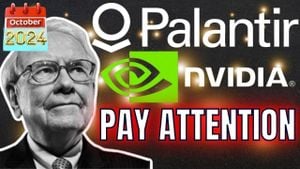New York City’s congestion pricing plan has stirred up intense controversy, leading to rallies and vocal opposition, particularly from leaders in New Jersey and Long Island. With the toll set to start at $9 for vehicles entering south of 60th Street by January 5, 2025, critics argue this initiative disproportionately affects working-class families struggling with rising costs.
On November 19, 2024, rallies were held across New Jersey and Long Island to formally announce opposition against the congestion pricing plan. Local politicians, including Congressman Josh Gottheimer from New Jersey, who has actively campaigned against the plan, called for federal intervention. Gottheimer is pushing for the U.S. Department of Transportation to conduct a new review, citing significant changes to the original proposal and advocating for at least 60 days of public commentary on the plan's repercussions.
“Let me say this to all hard-working middle-class families who are struggling to make ends meet,” Gottheimer stated, showcasing his concerns about the economic impacts of the congestion tax. He pointed out the expected traffic backlogs, especially on the George Washington Bridge, indicating how this plan could worsen traffic for commuters. The congressman emphasized he isn’t just talking about car commuters; affects will ripple across services such as tour buses and emergency vehicles, putting even more pressure on New Jersey families and impacting their health.
Further complicity arose with the announcement from New York’s Governor Kathy Hochul, who initially paused the congestion pricing last June, stating the proposed $15 toll could break the budgets of many families. Just months later, the MTA board approved the revised plan without significant public discussion, igniting immediate criticism from Gottheimer and other officials.
Other remarks during the rally emphasized the long-term financial repercussions of the new pricing. Without E-ZPass, daily commuters could face charges of $13.50, amounting to over $3,500 annually, creating fears among families about their affordability for regular trips to work.
Across the Hudson, New York politicians have not remained silent on this matter. Several state senators rallied together, rallying not only against the congestion pricing plan but questioning its tight timeline. “This is nothing short of another commuter tax imposed on our suburban communities,” said Senator Jack Martins during the protest, highlighting the bipartisan pushback from various political corners.
Adding heat to the argument, Palumbo reminded everyone of the serious economic burden this congestion pricing plan places on hardworking families who rely on their vehicles to commute. His focus has been on the impact this will have on many professions, including law enforcement, education, and sanitation, intimidating seniors and vulnerable groups who may not have the means to adapt.
Even more unsettling, some New Jersey lawmakers, like Senator Palumbo, worry about the lack of response to the environmental concerns associated with congestion pricing. They argue the toll could lead to increased pollution levels as traffic patterns shift to accommodate the toll, causing significant health risks and longer-term urban planning consequences.
While opponents of the plan voice their concerns, supporters believe introducing congestion pricing will not only lessen the Wall Street-style commuting congestion but also bolster New York’s public transportation system. They argue the revenues generated could contribute significantly to improving public transport infrastructure, with expectations of raising approximately $1 billion annually targeted for subway, bus, and commuter rail enhancements.
MTA officials claim this congestion pricing initiative will encourage at least 80,000 commuters to shift from personal vehicles to public transport, hence reducing overall vehicular traffic and improving air quality. They have framed this as necessary for transitioning toward more sustainable urban living.
Notably, Republican representatives across the state have rallied behind Gottheimer's initiatives. Politicians from both sides are attempting to recount the details from previous battles they waged against congestion pricing, reflecting their frustration with the MTA's approach to this evidently contentious transportation issue.
“We’ve seen Republicans and Democrats all oppose this,” remarking Senator Martins, emphasizing the consensus growing around this issue, signifying it transcends party lines and concerns the daily lives of many residents.
Gottheimer's quest includes pushing several bipartisan bills aimed at counteracting the congestion pricing, such as the Anti-Congestion Tax Act which will prevent the Department of Transportation from granting funds to MTA projects until exemptions for New Jersey and New York drivers are made. The joint effort indicates unified fear from both Democratic and Republican lawmakers of the financial strain posed by this new tax.
Still, as the clock ticks closer to the set implementation date, concerns grow louder, and legal challenges loom on the horizon. Opponents are keeping their hopes alive for legal avenues to push against the implementation, echoing sentiments of fight and resolve against what many perceive as unfair taxation.
With all this heat and fervor surrounding the congestion pricing plan, local leaders are adamant about their fight to halt what they regard as unfair financial burdens on families and businesses. They argue this initiative, especially coming so soon after the recent election, raises questions about the commitment and responsibility of leaders to protect their constituents.
With future meetings scheduled and dialogues planned, as well as potential legal challenges brewing, this story is far from over. The congestion pricing plan is set to be thoroughly reviewed and debated as New Jersey lawmakers continue to seek concrete action against New York's approach to managing urban traffic amid the backdrop of the Hudson. It's evident there will be significant developments to follow as the January start date approaches.



